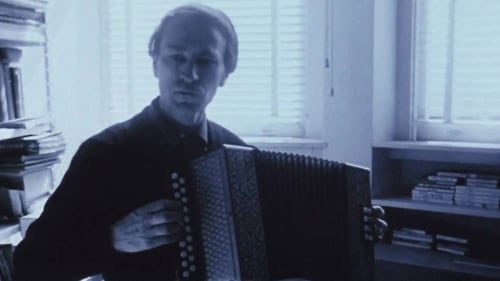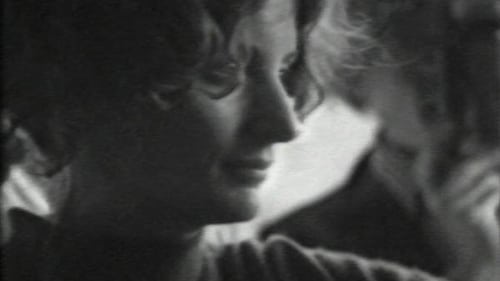Marie Menken
출생 : 1909-05-25, New York, New York
사망 : 1970-12-29
약력
Marie Menken was born Marie Menkevicius in New York City on May 25, 1909, the daughter of Catholic Lithuanian immigrants. She grew up in Brooklyn with a brother and a sister, in a home used to frequent financial difficulties. Both she and her sister Adele later changed their surname to Menken. Marie Menken and Willard Maas had got married in 1937, moving into a Brooklyn penthouse at 62 Montague Street which they would inhabit until their deaths. She died on December 29, 1970. Four days after her death, on January 2, 1971, Willard Maas died.

Herself (archive footage)
A look at avant-garde filmmaker Marie Menken.

Self
“1950년부터 영상 일기를 찍었어요. 언제나 볼렉스 카메라를 들고 다니며, 내가 만나게 되는 상황이나 친구, 뉴욕의 모습, 계절의 변화 등 즉각적인 현실에 반응하고자 했죠. 어떤 날에는 열 프레임, 어떤 날에는 10초, 또 어떤 날에는 10분 정도 촬영을 했습니다. 물론, 아무것도 찍지 않은 날도 있었어요. 일기를 쓸 때는 ‘회상’이라는 절차가 수반되는데, 보통 책상에 앉아서 그날 하루를 되돌아보며 일기를 써 내려가기 때문이죠. 한편 영상(카메라) 일기의 경우, 어떤 순간에 대한 즉각적인 반응을 포착할 수 있습니다. 특정 대상을 카메라에 제대로 담던 담지 못하는 것과 관계없이, 순간의 반응 자체를 카메라가 기록합니다. 어떤 상황에 다시 돌아가 촬영을 재개한다면, 그것은 재연된 영상이 되어버리죠. 이는 사건이나 감정이 수반될 수밖에 없습니다. 일어나는 일을 있는 그대로 포착하려면, 내가 사용하고 있는 도구(여기에서의 도구는 볼렉스 카메라를 말한다)에 대한 온전한 이해가 필수적입니다. 내가 반응을 보이는 현실뿐만 아니라 내가 반응함과 동시에 내 감정의 상태(와 모든 기억)까지 포착할 수 있어야 하기 때문이죠. 다시 말해, 카메라를 들고 촬영이 이루어지는 바로 그 장소에서 영상의 구조화(편집) 작업까지 끝낼 수 있어야 합니다. 월든에서 여러분이 만나는 모든 영상은 카메라에 담겨있는 영상과 동일합니다. 1964년부터 1968년까지 촬영한 영상을 순차적으로 연결한 것입니다. 사운드트랙의 경우, 목소리, 지하철 소리, 길거리 소음 등 촬영 당시 수집한 사운드에 쇼팽의 음악-난 로맨틱한 사람입니다-과 때때로 의미 있고 또 때때로 의미 없는 사운드를 섞어 제작하였습니다.”

Director
A boat trip with friends round Manhattan, shot in single-frame mode

Cinematography
An expansion upon an idea put forward in Marie Menken's film Notebook; single-frame footage of the moon shot on various nights, blinking and darting around within Menken's field of vision.

Director
An expansion upon an idea put forward in Marie Menken's film Notebook; single-frame footage of the moon shot on various nights, blinking and darting around within Menken's field of vision.

Director
"By 1967, Menken had become interested in the work of Fluxus artist Robert Watts and made a short animation piece, Watts with EGGS, in which she animates his chrome-casted Box of Eggs. The film opens with lights reflected in the eggs (of course), then, through single framing, pixilates a man's hand arranging eggs in different patterns. The hands (those of John Hawkins) fill the box back up with eggs. Next, the eggs do the same routine, but more magically, more serenely, without the assistance of the hands. Menken also introduces a string and a feather duster into animated action, so that the eggs, one by one, seem to be coming directly out of the duster (objects infect objects). By the end, the eggs are magically back in their box." Melissa Ragona

Camera Operator
In the Search of the Miraculous is a multi-levelled story realized with extremely personal techniques and with the kind of atmosphere of Poetry and Introspection, only a poet could create. It is, in fact, the story of a poet searching himself through his love for a girl, and of the girl searching for her father. Obsequious to the iron rules of the avant-garde, the film has neither a beginning nor an ending it is a series of moods, it is a search which is at the same time spiritual and concrete, it is a moment in the life of two people. (Donatella Manganotti)

Mother
Lacking a formal narrative, Warhol's mammoth film follows various residents of the Chelsea Hotel in 1966 New York City. The film was intended to be screened via dual projector set-up.

Director
Photography: Willard Maas and John Hawkins. "Looking down instead of around, while walking, finding the magic patterns in the pavements of a city."--John Hawkins

Director
Shot over a period of three years. Marie Menken photographed New York window displays during the Christmas holiday. In order to avoid foot and street traffic interrupting the shots, Menken filmed from midnight to 1:00 in the morning, but had to keep the camera under her coat to keep it from freezing.

Self
The films were made between 1964 and 1966 at Warhol's Factory studio in New York City. Subjects were captured in stark relief by a strong key light, and filmed by Warhol with his stationary 16mm Bolex camera on silent, black and white, 100-foot rolls of film at 24 frames per second. The resulting two-and-a-half-minute film reels were then screened in 'slow motion' at 16 frames per second.

Cinematography
마리 멘켄은 동료이자 친구인 앤디 워홀을 촬영한다. 동시에 앤디 워홀도 마리 맨켄을 찍는다.

Director
마리 멘켄은 동료이자 친구인 앤디 워홀을 촬영한다. 동시에 앤디 워홀도 마리 맨켄을 찍는다.

Juanita Castro
A playwright taunts a number of actors into improvising a truly ridiculous but subtlely meaningful meditation on Fidel Castro and his family.

Inspired by Bibbe Hansen's experiences in a juvenile detention center.

Director
A film of a painting of a sound. Piet Mondrian's 'Broadway Boogie-Woogie' is translated into visual boogie rhythm.

Cinematography
In 1963 Boultenhouse wrote, produced, and directed Dionysius,which he described as a “free treatment of Euripides' The Bacchae.”It starred the dancers Louis Falco, Anna Duncan, and Nicolas Magallanes as Dionysius, Agave, and Pentheus respectively, and the experimental filmmakers Charles Levine, Willard Maas, Gregory Markopoulos, Marie Menken, Lloyd Williams and William Wood as the Chorus of Cameras. The film's score was by Teiji Ito.

Writer
A wrestling match shown on television, shot on film-- A tv 'concrete'.

Director
A wrestling match shown on television, shot on film-- A tv 'concrete'.

Director
Various forms of everyday motion in and around a city are shown at rapid speed.

Cinematography
Filmed at the Alhambra in Spain in just one day, according to Marie Menken. Arabesque for Kenneth Anger concentrates on visual details found in Moorish architecture and in ancient Spanish tile. The date 1961 refers to the addition of Teiji Ito's soundtrack and its subsequent completion, but the film was likely shot in 1960 or earlier. - David Lewis

Director
"This is a new version of the now famous film made for her husband, the poet and film-maker. Returning from the Brussels fair, she shot this at Versailles and the Louvre. There is wit, irony and prophecy here (though perhaps not apparent to those who do not know Marie Menken and Willard Maas personally). She says only 'A more serious film than ARABESQUE, BAGATELLE attempts to synchronize into a lyric statement some observations on Versailles.' Marie Menken's fountains are the fountains of life. Marie Menken's Versailles is the Versailles of death. The beauty of this film is the alternation of the fountains and Versaille death. Only Marie Menken would have the subtlety, sensibility, sesitivity, receptivity to fuse and fetilize the classical paradoxes in such an immediate visual apotheosis." -- Charles Boultenhouse

Director
Filmed at the Alhambra in Spain in just one day, according to Marie Menken. Arabesque for Kenneth Anger concentrates on visual details found in Moorish architecture and in ancient Spanish tile. The date 1961 refers to the addition of Teiji Ito's soundtrack and its subsequent completion, but the film was likely shot in 1960 or earlier. - David Lewis

Director
비 내리는 공원의 풍경, 밤하늘의 달, 색종이를 이용한 애니메이션 등 노트에 자신의 자유로운 생각을 기록하듯 만든 영화.

Director
"Spattered paint responding to gravity, forming its own patterns and combinations of color." -- M.M.

Director
"A study in light based on persistence of vision and enhancement from eye fatigue." -- M.M.

Director
Menken's 16mm, stop-motion tribute to the art of Dwight Ripley was filmed in 1959 in his apartment at 416 East Fifty-eighth Street in New York. She used his drawings as flats.The remarkably contemporary soundtrack for steel drum, guitar, flute, and voice was written for the occasion by Maya Deren's young husband, Teiji Ito, and is available in his album Music for Maya (Tzadik). Stan Brakhage called Dwightiana a pioneer example of the film portrait, abstract rather than narrative (the colored pencils represent Ripley's palette). Ripley was also a botanist, and Menken's unusual title alludes to botanical nomenclature as if Dwightiana might be the name of a species as well as a work "about" Dwight.

Director
A film by Marie Menken.

Director
In this strange little film, Marie Menken photographs billowy flames superimposed over microscopic medical footage of writhing spermatozoa.

Director
Experimental film showing film clips of a garden, with birds chirping for the soundtrack.

Sibyl
A film poem, a re-telling of the Greek myth in modern terms. In the traditional pool the water has become muddy and Narcissus finds that mirrors are more rewarding for the study of his changing reflections. There are three mirrors, each reflecting a dramatic study in self-love. The first, love that deserves the adoration of the opposite sex; the second, homosexual love that investigates itself and its own sex; the third, love that insures one a place in the present and history.

Cinematography
A young male protagonist dreams of a muscleman hero, a black dancer, and a princess who gives him a magic urn. When he wakes he rejects his mother (Menken) and wanders the cold streets, where he finds his dream characters corrupted or dying.

Mother
A young male protagonist dreams of a muscleman hero, a black dancer, and a princess who gives him a magic urn. When he wakes he rejects his mother (Menken) and wanders the cold streets, where he finds his dream characters corrupted or dying.

Director
A voice occasionally says a word or two: "on the sidewalk" or "lithium" or a woman's name. A hand-held camera frames parts of sculptures, or moves across their surfaces, sometimes slowly, sometimes quickly, almost always in close-up. The soundtrack, in addition to the voice, is discordant music. Light and shadows are paramount. Sometimes the camera repeats up and down movements; once, a set of jump cuts brings an object closer. The music can be shrill in contrast to the sculptures. Almost entirely of wood, they are the work of Isamu Noguchi (1904-1988): Abstract, usually smooth and rounded (but not always).

Cinematography
A quotation from Aristophanes, "The desire and pursuit of the whole is called love," precedes views of a man and a woman's bodies, often in extreme close up. Off-screen, a voice recites fragments of oracular literature and purple prose. We see an eye, an ear, a mouth, a tongue, bits of hair, a hand, the tips of fingers, toes. Occasionally, the frame includes a larger scape of a body: a chest, a back, a breast. Usually the camera is stationery; sometimes, it moves across a body, remaining in close up. They hold hands for one moment. The bodies are without clothes; no genitalia are visible.

Body
A quotation from Aristophanes, "The desire and pursuit of the whole is called love," precedes views of a man and a woman's bodies, often in extreme close up. Off-screen, a voice recites fragments of oracular literature and purple prose. We see an eye, an ear, a mouth, a tongue, bits of hair, a hand, the tips of fingers, toes. Occasionally, the frame includes a larger scape of a body: a chest, a back, a breast. Usually the camera is stationery; sometimes, it moves across a body, remaining in close up. They hold hands for one moment. The bodies are without clothes; no genitalia are visible.






